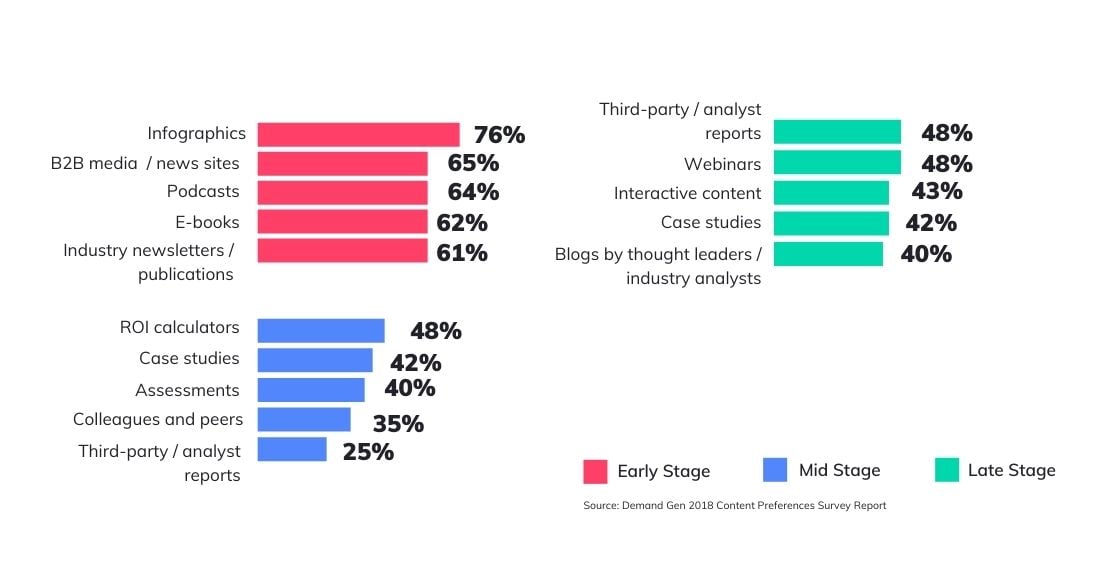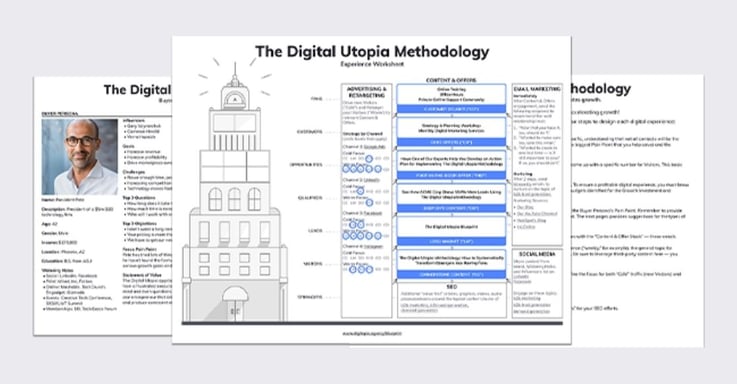How to Conduct a B2B Content Audit: Gauging Performance
by Digitopia | Updated Apr 12, 2022
How often do you blog, create videos, or post images on social media and your company website? If you're writing regularly, it's essential to review analytics and the content you're creating to ensure it's appealing to your target demographic.
Use the list below to audit your content efforts. In doing so, you'll be able to determine what works, what doesn't, and how to better organize future content efforts.
Gather and Organize Content
The content featured on your blog could include:
- video content
- written content
- whitepapers
- Charts & graphs
- Infographics
Gather all of the content you've created in the past quarter (or timeframe you've selected). We suggest using a Google Spreadsheet to organize information. Create columns for the following:
- Goal* - The goal of each piece of content (to educate your audience, share information about an event, etc).
- Content Type - The type of content used, (videos, images, articles, presentations, etc.).
- Evergreen or Timely - Is the content evergreen (you can use it again) or timely (it covered a specific occurrence, for example)?
- Author - Who wrote the content? If it's a video or image, who was featured in the video/photo?
- Topic - What was the main topic or theme?
- Publishing Date and Time - When and at what time was the content published to your website or a social channel?
- Traffic Driven to the Site - Use Google Analytics to record the number of visitors each piece of content received.
- Conversion Element - Was there a conversion element in place? For example, 'download,' or 'email signup.'
- Amount of Conversions - How many people took the desired action?
- Social Sharing - If you regularly use multiple platforms, add a column for each platform and choose a metric that's most important to you. For example, 'shares on Facebook.'
Determine the Effectiveness of the Content
Now it's time to dig deep and use this information to ensure your content marketing strategy is helping your business grow. Start by understanding the goals mentioned above.
Know Your Goals
When our team creates a content strategy for clients, we make sure it meets one of the typical four goals we've helped determine for them. These goals, or marketing pillars, mirror the client's primary marketing objectives. For example for Digitopia, our primary pillars are:
- Education - We share blog posts and host Twitter chats about topics that are of interest to our target demographic.
- Community - Our team regularly volunteers and practices sustainability. We showcase this via images on Instagram and through articles on our website.
- Industry Involvement - We present at conferences and post our presentations online. We do this to help develop agency partnerships and engage with the digital marketing community in San Diego.
- Company Culture - We often showcase our company outings, birthday celebrations, and more. We do this for fun, but also as a recruitment and retention effort.
We highly suggest determining your marketing goals before conducting an audit. Then you'll be able to see if the content you're creating is meeting these goals.
Next, analyze which type of content worked best.
Know Your Buyer Personas
Different content types cater to different audiences. Knowing your target audience or buyer persona is key in creating content that performs. It's important to consider the following:
- How do they consume content?
- Where do they go for answers to questions?
- What content types do they prefer?
- What places do they like to visit online?
- Is your content generating high-quality leads?
- Does your content guide readers to the next stage of the buyers journey through content offers or call to actions (CTAs)?
- Of your current content, which is the most engaged with? Is it attracting the right audience?
- Is your content answering buyer personas' questions better than other content? Is it more effective content than others out there?
It's important to note that the answers to some of the questions above could look different for each stage of the buyers journey. A 2018 study that surveyed how B2B market consumed content per buyers journey stage found that the most effective content types were different per stage.
Know Your Content's Lifespan
Make sure that you're not creating strictly timely content. It's great to report on news and current events, however, the usable lifespan of that piece is limited. If you're only creating timely content, you're missing out on the opportunity to have content that you can share again and again.
Always make sure your evergreen content is useful and interesting. This audit will let you know if you're creating too much timely content and not enough evergreen articles/videos.
Know SEO Best Practices
Your content could check all the boxes and be spectacular, but if your audience can't find it then that's a big problem. Making sure your content is following SEO best practices can make sure your content is showing up in search results for terms your audience is looking for.
Make sure to check:
- Are your Header Tags structured properly?
- Do you have a targeted keyword?
- If your content is a written article, is it at least 600 words long?
- Do your images have alt text?
- Does your blog have correct formatting? Is the reader's experience good?
Use Google Analytics to check content views, bounce rate, and time spent on the page. Then keep in mind the following recommendations:
- Is your content generating organic traffic? If not, you will need to work on optimizing SEO to get it ranking higher in search results.
- Is your bounce rate high on a scale of 1-100%? When the bounce rate is high, that means people are visiting the page and then leaving your website right after instead of exploring other pages. If your bounce rate is higher than 80%, try to see if there are ways you can feature other types of content they can explore after landing on your page.
- How long are people on your pages? Time spent looks at how long people are on your page. For example, if your 1,000 word blog has a time spend of 10 seconds, people are not reading it. You may need to tweak the opening line or make changes to imagery.
Create Content That Converts
At Digitopia, we provide B2B businesses with the resources they need to achieve their content marketing objectives. Our proven Digital Utopia Methodology has helped B2B businesses like yours thrive in their online marketing efforts.
Not sure where to start with your content audit? Download our Digital Utopia Blueprint to start creating content that converts.
When you download, you'll have:
- An easy-to-articulate digital marketing strategy to drive quality sales opportunities
- A tool to help facilitate organizational alignment
- Insight into the basic business math that will help you hit your organization’s growth goals
- Clear numbers to help you define your marketing budget for the year and for specific digital marketing initiatives
- Clarity on what success looks like at every level
- A renewed understanding of your target market and the exact role your brand plays in his or her life.
Click the button to download your blueprint and get started!










